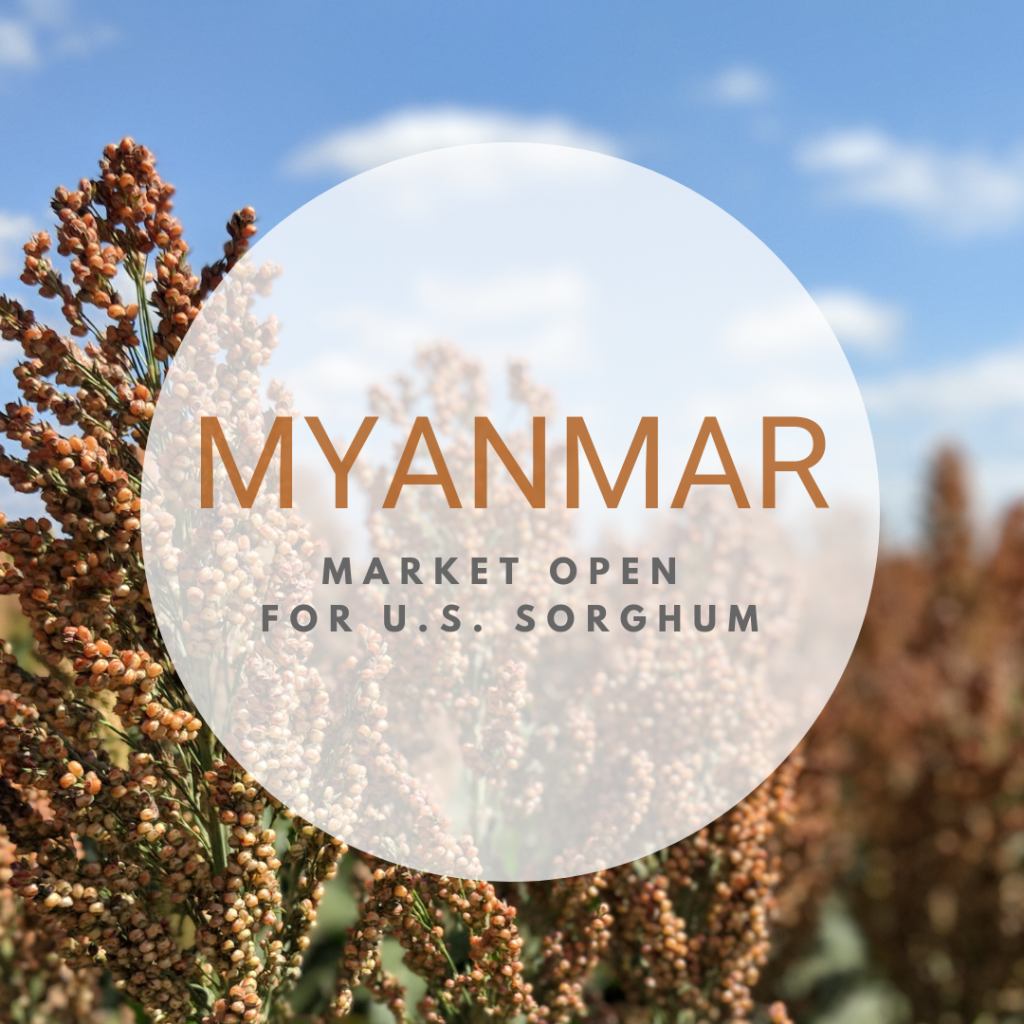A welcome positive development coming out of Southeast Asia this month for U.S. sorghum farmers is also an excellent example of the effectiveness of the public-private partnership supported by market development programs included in the U.S. farm bill.
As of Sept. 14, Myanmar has approved the importation of U.S. sorghum for food, feed and further processing. While this does not guarantee sales, the announcement does open an important door for feed producers who want access to the grain and U.S. Grains Council (USGC) staff in the region poised to work with those buyers.
“Market development is most exciting when we are finding new possibilities and constraints that, if the right players are engaged, can be fixed,” said Cary Sifferath, USGC senior director of global programs, who overseas several of the organization’s global offices and also worked in the Southeast Asia region early in his career. “The announcement from Myanmar is a great first step to sorghum sales there and a great example of what we really do on a daily basis.”
The success came after many months of work by the Council – a participant in the Market Access Program (MAP) and Foreign Market Development (FMD) program, both authorized by the 2014 Farm Bill – working with the United Sorghum Checkoff Program (USCP) – a Council member and funded by U.S. sorghum farmers – and U.S. government agencies, including the U.S. Department of Agriculture’s Foreign Agricultural Service (USDA’s FAS) and USDA’s Animal and Health Plant Inspection Service (APHIS).
The Council and USCP first identified the issue talking with grain buyers in Myanmar as part of regular trade servicing work. The country is not issuing import licenses for corn, making U.S. sorghum attractive – if the regulatory hurdle of import approvals could be overcome.
With this constraint in mind, the groups were able to work cooperatively to get local authorities the pest risk assessment needed to ease this challenge. USCP provided valuable information to APHIS to assist with the paperwork needed to apply for approval, while USGC staff in the region facilitated exchange between local industry and U.S. stakeholders. Ultimately, APHIS submitted the risk assessment documentation earlier this month to the authorities.
A seemingly mundane detail to many in the U.S. grains value chain not involved first-hand with importing and exporting, regulatory approvals are critical to the smooth flow of products around the world, making them one focus of the Council’s staff in more than 25 global locations as part of a comprehensive market development approach to sales in more than 50 markets.
“Our staff on the ground hear about challenges in local markets every day,” Sifferath said. “Having people there to listen to our customers talk about their issues, work directly with our members and industry and be able to go back and forth with the U.S. government and local government is really what makes the grain trade flow. We love opening new markets because that gives us more opportunity to develop solid, ongoing sales.”
About The U.S. Grains Council
The U.S. Grains Council develops export markets for U.S. barley, corn, sorghum and related products including distiller’s dried grains with solubles (DDGS) and ethanol. With full-time presence in 28 locations, the Council operates programs in more than 50 countries and the European Union. The Council believes exports are vital to global economic development and to U.S. agriculture’s profitability. Detailed information about the Council and its programs is online at www.grains.org.

